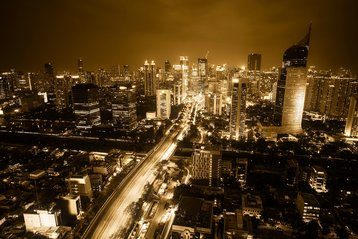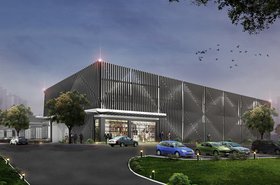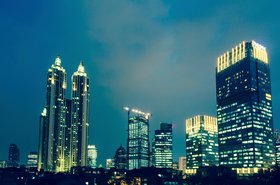Indonesia has one of the fastest-growing mobile user bases in the world – the archipelago is home to 260 million people and is the largest economy in Southeast Asia. Around 65 percent of the population are active Internet users, making it a rich untapped resource for e-commerce giants and global financial institutions.
While the sheer number of connected people sounds promising, it is not the case for local data infrastructures. Its data centers are unable to keep up with the demand, putting organizations at risk of downtime. This may lead to damaged brand reputations and financial losses.
Current data centers have small capacities at about 5 to 10 megawatts, which clearly isn’t sufficient for the dynamic requirements of a multinational firm. Modern demand calls for scalable, contiguous and reliable systems and there isn’t anything like that in Indonesia right now.
The time is now
There is a myriad of practical reasons why it is an opportune time for Indonesia to build its first few Tier IV data centers. A Tier IV data center is considered the most advanced and robust of all data centers - with 99.995 percent availability and two power sources for backup uses.
It is intended for companies that need to function with virtually zero downtime, such as financial institutions, government agencies, and e-commerce firms. Machine-learning and artificial intelligence software may be applied to help with the maintenance and optimization of data centers, to eliminate any chance of faults and downtimes.
The obvious reason for building a Tier IV data center is that such a center is able to handle large amounts of data and transactions successfully, without disruption. But just as important is the need for Indonesia to reduce its reliance on overseas data centers that make up for the country’s relative lack of processing capability and quality infrastructure.
Utilizing a high-quality data center locally would reduce latency significantly as there will be less reliance on international links. While a reduction of six milliseconds per transaction may seem negligible, this can be applied across millions of transactions happening at any moment, easing information bottlenecks.
For overseas data flows, data is mainly transmitted through submarine cables. Despite more people streaming, and with more content going around the world, the bandwidth of a subsea cable remains limited. If a data center is built locally and closer to the source of data, it will remove a lot of the traffic on these cables.
The data center of the future must be highly scalable so as to meet the growing demand for infrastructure space.
Jakarta currently has 50.2MW data center capacity with an incremental 70MW in the pipeline by 2021. The new data centers will apply best practice principles to be scalable, secure and efficient; at least one campus will be energy self-sufficient to operate reliably, at a very low PUE, experience high fault tolerance and to offer high uptime availability. This will give customers who have established themselves in Jakarta more opportunities to expand quickly, knowing that there is available capacity at hand.
The last thing expanding enterprises would want is to split their data load across a multitude of low capacity data centers. It is a highly unproductive way of managing data flows.
Enterprises need a common facility that can provide interconnectivity between their various applications, so that they can respond to their customers fast and provide a higher standard of service.
Grid struggles
Indonesia’s power grid is being pushed to its limits, which is a challenge for information-based enterprises that rely on a constant availability of data to get through the day.
Furthermore, natural disasters such as earthquakes and floods pose a constant threat. One never knows when the next calamity will strike, nor if it will disturb the electrical supply.
Fortunately for Indonesia, its island chain lies on large natural gas reserves. As pipelines run throughout Jakarta, a data center campus could be strategically located to access natural gas to power its campus.
Clean power is carbon efficient. A gas-run data center produces 2.3 units of carbon for every kilowatt hour, whereas a typical data center produces 4 units of carbon for every kilowatt hour.
Any waste heat generated by the data center is put through a heat exchanger for cooling purposes, further boosting carbon efficiencies. Diesel generators can provide back-up in case of a fault in the natural gas supply.
But the bigger purpose behind using cleaner power sources is to bring about environmental sustainability over the long-term. Plans are in place already to build data centers that run on renewable energy across Southeast Asia, in particular the Philippines, Vietnam, and Thailand. Like Indonesia, these countries are fast-moving digital markets that have very high mobile penetration rates.
While they may not be powered by natural gas, alternative forms of energy to fossil fuels, such as hydro-power may be used, or even solar power, if it can store enough solar energy for it to run a data center 24/7.
Data centers are one of the most energy-intensive structures in the world. A new breed of data center companies aims to do more with less, as we need to consider future generations and the planet they are going to inherit.





